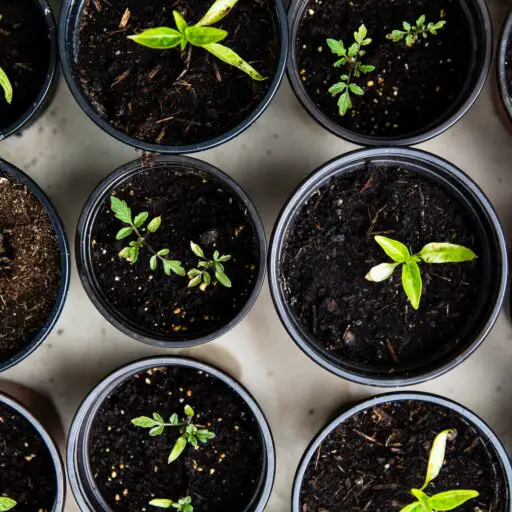Support our educational content for free when you purchase through links on our site. Learn more
Are you curious about community gardens and whether they truly offer a free way to grow your own food? You’re not alone! Community gardens have become a popular way for neighbors to come together, cultivate fresh produce, and foster a sense of community. But the big question remains: Are they really free? 🤔
In this article, we’ll dive deep into the world of community gardens, uncovering the costs, benefits, and how you can get involved. Did you know that some community gardens can produce up to 20% of a household’s vegetable needs? Imagine the savings and the joy of harvesting your own tomatoes, peppers, and herbs! By the end of this post, you’ll have a clear understanding of what to expect from community gardens and how to find or start one in your area.
Key Takeaways
- Community gardens can be free or have associated costs, depending on the garden’s structure and location.
- Benefits extend beyond food: They promote social interaction, environmental sustainability, and physical health.
- Getting involved is easy: Research local gardens, reach out, and participate in community events.
- Challenges exist, such as funding and land access, but dedicated groups can overcome these hurdles.
- Starting your own garden is a rewarding way to engage with your community and grow your own food.
Ready to dig deeper? 🌿 Check out our recommended gardening tools and books to kickstart your gardening journey! 👉 Shop Gardening Tools: Fiskars Garden Tools | Gardena Watering Systems.
Table of Contents
- Quick Tips and Facts
- Understanding Community Gardens: Are They Really Free?
- The Cost Breakdown: What to Expect
- Benefits of Community Gardens: More Than Just Free Food
- How to Get Involved: Joining a Community Garden
- Community Garden Programs Across the U.S.: A Closer Look
- Sustainability and Community Gardens: Growing Green Together
- Challenges Faced by Community Gardens: What You Should Know
- Tips for Starting Your Own Community Garden
- Conclusion
- Recommended Links
- FAQ
- Reference Links
Quick Tips and Facts
- Community Gardens can be free or have associated costs. It depends on the garden’s structure and location. 🌱
- Benefits include fresh produce, community bonding, and learning opportunities. 🥕
- Joining a garden often involves signing up, and some may require a small fee for maintenance.
- Skill Level: No experience is necessary! Community gardens welcome everyone. 🤗
- Finding a Garden: Use local social media groups, community boards, or websites to locate one near you.
Understanding Community Gardens: Are They Really Free?
Community gardens are shared spaces where individuals come together to grow plants, vegetables, and flowers. The question on many people’s minds is, “Are community gardens free?” The answer is a bit nuanced.
What You Need to Know
-
Types of Community Gardens:
- Allotment Gardens: Individuals rent plots for personal use.
- Communal Gardens: Everyone works together on shared plots.
-
Cost Factors:
- Some gardens are completely free, while others may charge a small fee to cover maintenance costs, tools, and water.
- For instance, a gardener might pay around $67 for a season, which helps maintain shared resources.
Pro Tip: Always check with your local garden for specific rules and fees!
The Cost Breakdown: What to Expect
Understanding the costs associated with community gardens can help you budget effectively. Here’s a breakdown of potential expenses:
| Expense | Description |
|---|---|
| Membership Fees | Some gardens charge an annual fee for maintenance. |
| Seeds and Plants | You may need to purchase your own seeds or seedlings. |
| Tools and Supplies | Some gardens provide tools, while others may require you to bring your own. |
| Water Costs | In some cases, there may be a fee for water usage. |
Note: Many community gardens are designed to be affordable, making them a great option for those looking to grow their own food without breaking the bank! 🌾
Benefits of Community Gardens: More Than Just Free Food
Community gardens offer a plethora of benefits that extend beyond just growing food. Here’s why you should consider joining one:
Health Benefits
- Fresh Produce: Access to organic fruits and vegetables.
- Physical Activity: Gardening is a great way to stay active! 🏃♂️
Social Benefits
- Community Building: Meet your neighbors and make new friends.
- Shared Knowledge: Learn gardening tips and tricks from fellow gardeners.
Environmental Benefits
- Biodiversity: Support local ecosystems by planting native species.
- Sustainability: Community gardens promote sustainable practices and reduce food miles.
Did You Know? According to a study by the American Community Gardening Association, community gardens can lead to decreased crime rates and increased property values in the surrounding areas! 📈
How to Get Involved: Joining a Community Garden
Getting involved in a community garden is easier than you might think! Here’s a step-by-step guide:
- Research Local Gardens: Use platforms like Facebook or Google to find community gardens in your area.
- Contact the Garden: Reach out to the garden coordinator to inquire about membership and any associated fees.
- Visit the Garden: Attend an open house or volunteer day to get a feel for the community.
- Sign Up: If you feel comfortable, sign up for a plot or join communal gardening efforts!
Remember: Each garden has its own rules and structure, so be sure to ask questions!
Community Garden Programs Across the U.S.: A Closer Look
Let’s take a look at some notable community garden programs across the United States that exemplify the spirit of community gardening:
| City | Program | Details |
|---|---|---|
| Austin, TX | Community Gardens Program | Supports gardens on city-owned land; offers grants and volunteer coordination. Learn more |
| New York, NY | NYC Community Gardens Coalition | A network of over 600 gardens; promotes urban gardening and community involvement. |
| Los Angeles, CA | Los Angeles Community Garden Council | Provides resources and support for community gardens across the city. |
These programs not only help establish gardens but also foster community spirit and environmental awareness. 🌍
Sustainability and Community Gardens: Growing Green Together
Community gardens play a significant role in promoting sustainability. Here’s how:
- Local Food Production: Reduces the carbon footprint associated with transporting food.
- Waste Reduction: Many gardens practice composting, turning kitchen scraps into nutrient-rich soil.
- Water Conservation: Implementing rainwater harvesting and drip irrigation systems helps conserve water.
Fun Fact: A community garden can produce up to 20% of a household’s vegetable needs, according to the National Gardening Association. That’s a win-win for your wallet and the planet! 🌱
Challenges Faced by Community Gardens: What You Should Know
While community gardens are fantastic, they do face challenges. Here are some common issues:
- Funding: Many gardens rely on donations and grants, which can be unpredictable.
- Land Access: Finding suitable land can be a significant hurdle, especially in urban areas.
- Maintenance: Ensuring that all members contribute and care for the garden can be challenging.
Tip: Forming a core group of dedicated gardeners can help tackle these challenges effectively!
Tips for Starting Your Own Community Garden
Thinking about starting your own community garden? Here’s how to get started:
- Gather a Group: Find like-minded individuals who are passionate about gardening.
- Find Land: Look for available plots in parks, schools, or private properties. Check zoning laws!
- Create a Plan: Decide on the type of garden (allotment vs. communal) and layout.
- Fundraising: Consider hosting events or seeking grants to fund your garden.
- Engage the Community: Host workshops and events to attract more members and raise awareness.
Remember: The more inclusive and engaging your garden is, the more successful it will be! 🌼
Conclusion

Community gardens are a wonderful way to connect with nature, meet new people, and enjoy fresh produce. While some may come with costs, the benefits far outweigh the expenses. Whether you’re looking to join an existing garden or start your own, the possibilities are endless! So, roll up those sleeves and dig in! 🌿
Recommended Links
- Benefits of Community Gardens
- Community Garden Events
- Community Garden Policies
- Garden Design Ideas
- Garden Maintenance Tips
FAQ

-
Are community gardens free?
- It depends on the garden. Some are free, while others may charge a small fee for maintenance.
-
How do I find a community garden near me?
- Search online, check local social media groups, or ask neighbors.
-
What skills do I need to join a community garden?
- No experience is necessary! Community gardens welcome everyone, regardless of skill level.
Reference Links
- American Community Gardening Association
- National Gardening Association
- Sensible Sustainability
- Nourish Project
Conclusion

In summary, community gardens are not just about growing plants; they are vibrant hubs of community engagement, sustainability, and education. While some gardens may charge a small fee to cover maintenance and resources, many are completely free, making them accessible to everyone. The benefits of participating in a community garden are numerous: fresh produce, social connections, and a deeper understanding of the food system.
Positives:
- Access to Fresh Produce: Enjoy organic fruits and vegetables right from your garden.
- Community Engagement: Meet new friends and neighbors while learning from each other.
- Environmental Impact: Contribute to sustainability efforts and local biodiversity.
Negatives:
- Potential Costs: Some gardens may require membership fees or contributions for tools and maintenance.
- Commitment: Regular participation is often expected, which may not suit everyone’s schedule.
Overall, we confidently recommend exploring community gardens in your area. They are a fantastic way to connect with nature and your community while enjoying the fruits of your labor! 🌱
Recommended Links
-
👉 Shop Gardening Books on Amazon:
-
👉 Shop Gardening Tools:
- Fiskars Garden Tools: Amazon | Fiskars Official
- Gardena Watering Systems: Amazon | Gardena Official
FAQ

How do I find a free community garden near me?
Finding a free community garden can be as simple as:
- Online Searches: Use Google or social media platforms like Facebook to look for local community gardens.
- Local Organizations: Contact local gardening clubs, non-profits, or community centers that may have information on available gardens.
- Word of Mouth: Ask neighbors or friends if they know of any nearby gardens.
Read more about “How Does a Community Garden Work? 🌱 12 Essential Insights You Need to Know!”
What are the benefits of participating in a community garden?
Participating in a community garden offers numerous benefits:
- Access to Fresh Produce: Grow your own organic fruits and vegetables.
- Social Interaction: Meet new people and build friendships within your community.
- Learning Opportunities: Gain gardening skills and knowledge from experienced gardeners.
- Physical Activity: Gardening is a great way to stay active and healthy.
Do community gardens charge membership fees?
Membership fees vary by garden:
- Free Gardens: Some gardens are entirely free and open to the public.
- Fee-Based Gardens: Others may charge a small fee to cover maintenance, tools, and water costs. Always check with the specific garden for details.
Can anyone join a community garden, or are there restrictions?
Most community gardens are open to everyone, but:
- Membership Policies: Some gardens may have specific membership policies or waitlists.
- Local Priorities: Certain gardens may prioritize local residents or specific demographics, such as low-income families.
What amenities can I expect to find at a community garden?
Amenities can vary widely:
- Shared Tools: Many gardens provide tools for members to use.
- Water Access: Gardens typically have water sources for irrigation.
- Composting Facilities: Some gardens offer composting options for organic waste.
- Community Spaces: Areas for gatherings, workshops, or events may also be available.
Read more about “Unlocking the Secrets of Community Gardening: 20 Benefits You Can’t Ignore! 🌱 …”
How do community gardens support low-income families with food access?
Community gardens can be a lifeline for low-income families:
- Affordable Produce: They provide access to fresh fruits and vegetables at little to no cost.
- Educational Programs: Many gardens offer workshops on gardening and nutrition, empowering families to grow their own food.
- Food Security: By growing their own produce, families can reduce their reliance on grocery stores and improve their food security.
Are community gardens open to the public, or only to members?
Access policies vary:
- Public Access: Some gardens are open to the public, allowing anyone to visit and pick produce.
- Member-Only Access: Others may restrict access to members only, especially if they have designated plots or specific rules.
Read more about “What is a Community Garden? 15 Essential Insights You Need to Know … 🌱”


